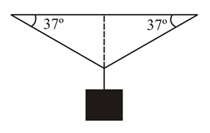Thermal Expansion
Thermal Expansion: Overview
This Topic covers sub-topics such as Thermal Expansion, Time Period of Simple Pendulum, Anomalous Expansion of Water, Coefficients of Thermal Expansion, Thermal Stresses, Coefficient of Linear Expansion and, Thermal Expansion in Liquids
Important Questions on Thermal Expansion
The absolute coefficient of expansion of a liquid is times that the volume coefficient of expansion of the vessel. The ratio of absolute and apparent expansion of the liquid is
If the temperature of body is increased by then the percentage decrease in its density is []
A pendulum clock keeps correct time at . Mean coefficient of linear expansion is . If the temperature of the room rises by a small amount of , then find the ratio of time period at to
A thin metal wire of length increases in length by on heating it from temperature , to . If a plate of the same material is heated from to , which has dimensions , then percentage increase in its area is
The internal volume of a glass flask is , how much volume of mercury is kept in the flask so that the volume of the empty part of the flask remains the same at all elevations? (Volume expansion coefficient of mercury is and linear expansion coefficient of glass ).
The coefficient of apparent expansions of a liquid in two different vessels are and . Then the real coefficient of expansions of liquid, if the ratio of volume expansion of vessels is , is
A long cylindrical vessel of volume and coefficient of linear expansion contains a liquid. The level of liquid has not changed on heating. The coefficient of real expansion of the liquid is
of liquid is of of liquid. of vessel is
A hole of diameter is drilled in a metal sheet at . The linear expansion of metal is . The diameter of the hole when the temperature is raised to , is equal to
Find the ratio of the length of a steel rod and a copper rod if the steel rod is longer than the copper rod at any temperature.
[The coefficient of linear expansion for steel and copper are and respectively]
A metal tape is calibrated at . On a cold day when the temperature is , the percentage error in the measurement of length is
(Coefficient of linear expansion of metal )
A metal bar is long. After heating, it's length increases by . What is the new length?
The coefficient of cubical expansion of a solid is . If the temperature is measured on Fahrenheit scale, numerical value of coefficient of linear expansion of solid is
A hollow metallic cube has edge length . A liquid whose coefficient of volume expansion is is poured into it upto height . When temperature increases, height of liquid in cube remains unchanged. Coefficient of linear expansion of cube's material is , find .
A uniform copper rod of length and diameter is kept on a frictionless horizontal surface at . The coefficient of linear expansion of copper is and Young's modulus is . The copper rod is heated to , then the tension developed in the copper rod is
An aluminium cube of side floats on mercury. The temperature of the system increases from to . Given that the density of aluminium and mercury at are and . while the coefficient of volume expansion of mercury and linear expansion of aluminium are and respectively
An experiment is performed to measure the coefficient of linear expansion of glass.
Experiment: A glass cylinder is filled completely by of mercury at temperature When the temperature of the cylinder is increased upto now it is observed that the cylinder can contain of mercury. In both the cases the temperature of the mercury is assumed to be equal to that of the cylinder. It is known that coefficient of volume expansion of mercury is The coefficient of linear expansion of glass measured from the experiment is
Find the value of
A block is hung by means of two identical wires having cross section area as shown in the diagram. If temperature is lowered by find the mass (in ) to be added to hanging mass such that junction remains at initial position. Given that co-efficient of linear expansion and Young's modulus for the wire.

A wire is made by attaching two segments together end to end. One segment is made of aluminium and the other is steel. The effective coefficient of linear expansion of the two segment wire is . The fraction length of aluminium is then find . (linear coefficients of thermal expansion of aluminium and steel are and respectively)
